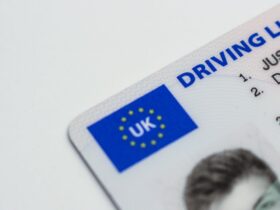Table of Contents
In today’s hustle and bustle, most people do not have time to go to the store and do shopping. Therefore, online shopping offers convenience and access to shoppers across the world. In other words, instead of spending hours stumbling through stores in search of items that don’t seem to be available, a quick search on your phone could save you time and stress as well as effort. We all enjoy the ease of it.
But, along with this convenience comes the danger of falling prey to online scams and fraudulent websites. Many people aren’t aware of how to safely shop online. This is why we have outlined ways to spot scams because it is very much important to differentiate between real or fake websites. Scammers frequently lure us by offering discounts that are impossible to refuse. In order to attract the bargain-seeking shopper and offer incredibly discounted prices or offers. Have you seen pop-ups or advertisements with 50% discounts or cashback that look too amazing to be true? This is because it’s likely to be. If the prices availability, price, or delivery date all appear like they’re worth it, be cautious.
Check out reviews on the site or retailer prior to clicking the link to determine whether anyone else has tried this offer or if it’s legitimate. At the same time, Scammers make use of the latest technology to design fake websites that resemble authentic retail shops online. They can employ elaborate layouts and designs, fake logos, or even a domain name similar to a genuine retailer. As a result, It is crucial to know how to recognize counterfeit websites to avoid becoming the victim of online scams.
Be sure not to be fooled by scams next time and know how to identify online shopping fake websites quicker by online website checker.
Here’s how you can protect yourself from online shopping scams
1. Look up the URL of the website:
When you visit any landing page of any website, first of all, you must verify the URL. A legitimate website will be able to provide a URL correct in spelling, with no additional characters or spelling errors. However, A fake site could have a URL identical to that of the authentic website, with minor differences. For instance, fake websites may make use of “.com” rather than “.co.uk” as well as “.org” as opposed to “.com”. Make sure you check the URL before entering any personal details or making purchases.
Another indicator is if a website’s URL appears to be a bit like the authentic address of the retailer, but it’s a little off. Avoid spoofing domains by manually entering the URL of a website in your web browser. Be wary of clicking links you receive via text message, email, or direct message only if you’re certain that it’s directly from the company.
2. Pixelated images:
The majority of fake websites have stolen images that are usually taken from the official website of a retailer or taken from Google. This means that most of the images used on fraudulent websites are of poor quality and often appear to be pixelated.
3. Nonexistent contact info:
A legitimate website will always contain contact information, including a telephone number email address, or physical address on the site. If you are unable to find contact information, it’s an indication that the website is not legitimate. If the site does provide contact information It is an excellent idea to verify them by contacting them via phone or email company to ensure the authenticity of the website.
4. Non-professional website design:
Scammers don’t require designers or engineers to build online stores. Some online builders and marketplaces let users build their own storefronts. However, fraudsters are known to be quick and don’t want to wait too long to design a fake site, since it is likely to be flagged as fraudulent and shut down. This is the reason they prefer simple, low-cost templates for their websites that have a limited number of features, often enough to convince skeptical clients that they’re actually authentic.
When you next visit an online shopping website, do some looking around. Examine all the elements on the homepage, and then spend time going through other pages. Incorrectly designed and simplified sites are a sure sign of legitimacy as are poorly crafted sitemaps.
5. Poor reviews or reviews that aren’t logical:
Prior to making a purchase it’s best to read reviews about the site and the products they sell. Find reviews on the websites that are independent. If a site has many negative reviews or has no reviews whatsoever, it could be best to stay clear of it altogether and instead look for a different online retailer. Moreover, A red flag could be when all reviews are glowing and written in less than standard English or with usernames that appear to be an assortment of letters and numbers They could be fake.
6. Find the symbol for padlocks:
The padlock symbol indicates that the website is secured and is protected by the SSL (Secure Sockets Layer) certificate. This means that the information that you input on the site is secure and cannot be read by hackers. If a site does not include a padlock symbol or in the event that the padlock symbol appears to be broken, it’s recommended to stay clear of the site and search for a different online retailer.
7. When a credit card payment option is not there:
It’s something that’s easy to do if you’re one who purchases online using credit cards. When you pay with a credit card, your transaction can challenge charges and suspend payments while the seller is under investigation. If you pay by cash or money order or have the price debited directly from your account, however, you are not covered by the protections. This is the way telemarketers continue to get your phone number.
8. Check for bad grammar and typos:
Scam websites typically contain grammar and spelling errors on their websites, which indicates that the site may not be authentic. Find any mistakes on the website’s pages and also in the descriptions of products and reviews. If you spot any errors it is recommended to stay clear of the site and search for a different retailer online.
Also Read: 4 Strategies to Become a Transformative Educator
Conclusion
Fraudulent online shopping sites and scamming sites can be deterred by taking a few basic precautions. By heeding the advice given, you will be able to take advantage of the convenience and accessibility of online shopping, while also avoiding fraudulent online shopping sites.
Online shopping is quick, easy, and simple. But, it’s crucial to understand how to shop with confidence to avoid fraud when shopping. If you put these suggestions into practice, you’ll be able to feel more confident that can identify the warning signs of fraud.





